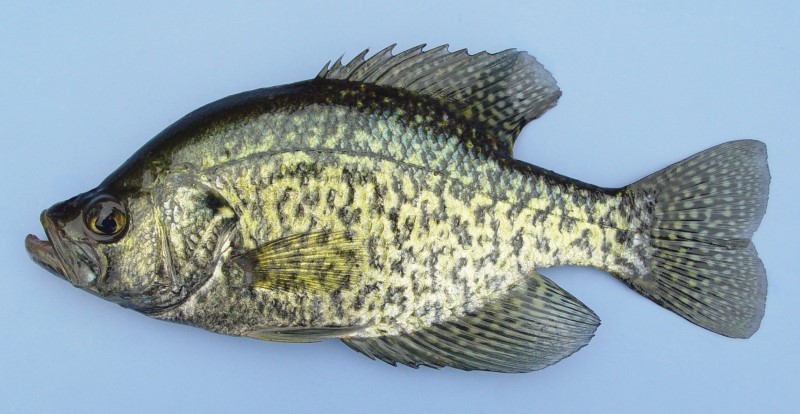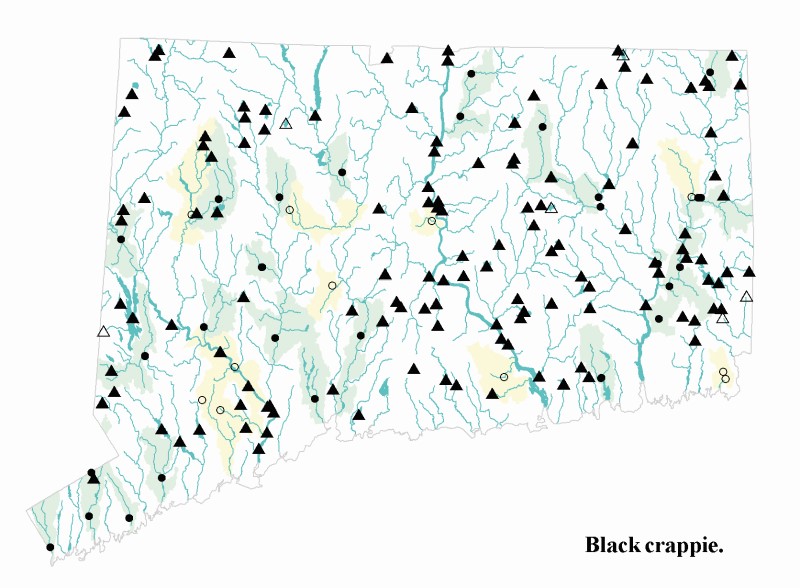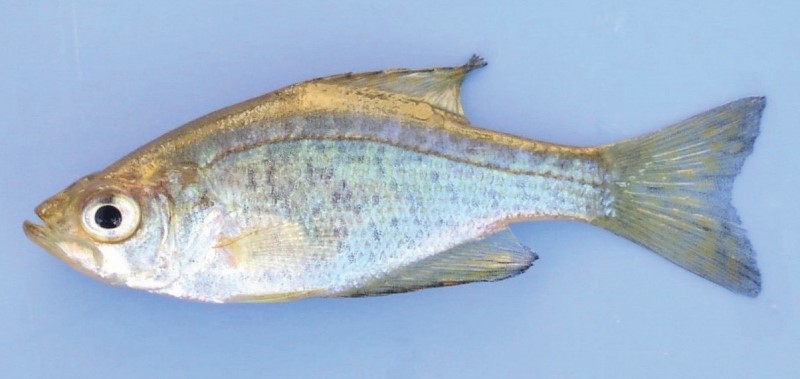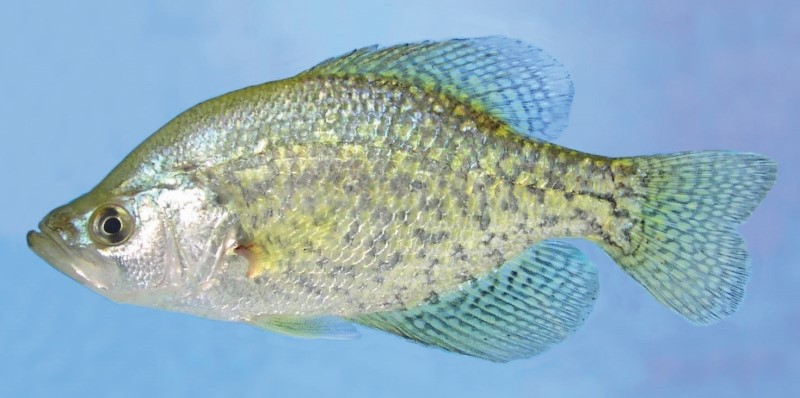Black Crappie (Pomoxis nigromaculatus) - Introduced

An 8-inch Connecticut River black crappie.
Identification. Very deep-bodied. Large mouth extends to below center of pupil. Dorsal fin length about equal to the distance from first dorsal spine to the eye. Dorsal spines 7-8. Base of anal fin similar in length to base of dorsal fin. Anal spines 5-7, usually 6. Many small, dark blotches on sides that do not form vertical bars. Olive to grayish-green on back; brassy yellowish-green to silver on sides; white on belly. Dorsal, anal and tail fins have many light spots on a darker background. Males can get very dark during spawning season. Juveniles are similar to adults, but markings can be very faint.

Spawning male black crappies often become very dark.
Size. Commonly 6 to 11 inches. State survey max. size 16.1 inches. Conn. State Record 4 pounds, 17 inches. Max. reported size 19.3 inches. World Record 4.5 pounds.
Distribution. Native range includes the Eastern United States and southern Canada from the Mississippi drainage eastward, excluding most of the Atlantic coastal states from Maine to Virginia. Has since been widely introduced elsewhere. In Connecticut, black crappie occur within all drainages, where they are typically uncommon to common in abundance.

All maps created in 2009. See CT DEEP Fish Community Data for updated distributions.
Habits. Prefer at least moderately clear water of lakes and larger ponds, as well as backwaters of larger streams and rivers. They are usually found in small schools and prefer moderate amounts of submerged vegetation. Crappie are often found near cover, such as boulders or fallen trees. Spawning occurs in shallow water usually near vegetation in the early spring (usually April). The nests are cleared circular areas 8 to 10 inches in diameter and are not as conspicuous as those of many other sunfish. Crappie can be readily caught by angling on a variety of small baits and lures. Popular baits are small jigs or live minnows. Crappie are fairly easy to keep in home aquariums, but require live food, preferably fish. They are passive, and perish quickly if stressed by larger fish. They fare best if they are the largest fish in the tank.

This 2.5-inch juvenile black crappie is more slender than an adult and has only a hint of the adult color patterns.
Comments. Also called “calico bass,” crappie grow quickly and are a popular food and sport fish.

Aquarium photo of an adult black crappie.
Text and images adapted from Jacobs, R. P., O'Donnell, E. B., and Connecticut DEEP. (2009). A Pictorial Guide to Freshwater Fishes of Connecticut. Hartford, CT. Available for purchase at the DEEP Store.

